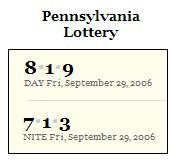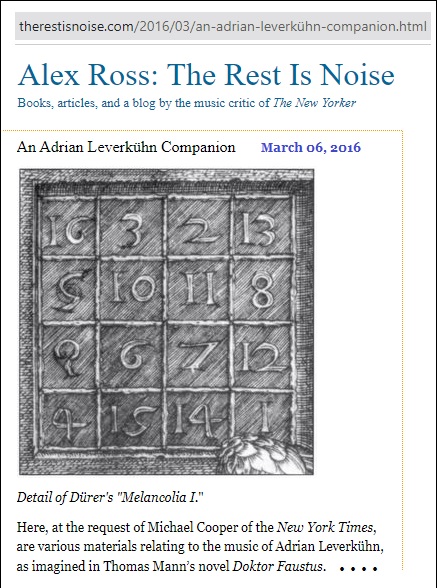The previous post and Mann's Doktor Faustus in this journal
suggest a look at . . .
Friday, January 13, 2023
Saturday, July 8, 2023
Blacklist Quote from S10 E20, “Arthur Hudson”
"I am what I am. You made a devil's bargain.
Did you really expect me to stop being the devil?"
Read more at: https://tvshowtranscripts.ourboard.org/
viewtopic.php?f=194&t=64076
See as well yesterday's post CORE and Faustus in this journal.
Wednesday, June 7, 2023
Exploring Color Space . . . Continues.

"Another story" —
See also Sontag's own account of the Mann meeting.
Related material —

It would seem that Moser is deeply confused about two different
meetings of Sontag with Mann — discussing Doctor Faustus
in 1947, and, later, as a U. of Chicago student, discussing
The Magic Mountain with Mann in 1949 on the Feast of the
Holy Innocents — coincidentally, also the date of her dies natalis
(in the Catholic sense) in 2004.
Thursday, February 2, 2023
“Solid Objects Precipitating”
Thursday, January 27, 2022
Malt Does More than Milton Can
Later . . .

Scholium for Doctor Faustus, suggested by
a search in this journal for Robert Mann —
"Words move, music moves
Only in time; but that which is only living
Can only die. Words, after speech, reach
Into the silence. Only by the form, the pattern,
Can words or music reach
The stillness, as a Chinese jar still
Moves perpetually in its stillness."
— Four Quartets
Monday, January 17, 2022
Finest Trick
"The Magician’s finest trick was to
dismantle the pretensions of genius
while preserving his own lofty stature."
— Alex Ross in The New Yorker , Jan. 17, 2022
Related material —
Meanwhile . . .
Saturday, December 19, 2015
Nunc Stans
On conductor Kurt Masur, who reportedly died at 88
in Greenwich, Connecticut, today, Saturday, Dec.19, 2015 —
"Rehearsal conductor at Halle State Theater,
Saxony, East Germany, conductor at Erfurt City Theater
and Leipzig Opera, and guest conductor with Leipzig
and Dresden Radio orchestras, 1951-53…."
Motifs from yesterday's 9 PM post —

Design from 1697
— and from a novel by Thomas Mann:
Design from 1514
Related text —
Monday, October 14, 2013
Up and Down
Heraclitus, Fragment 60 (Diels number):
|
The way up and the way down is one and the same. ὁδὸς ἄνω κάτω μία καὶ ὡυτή hodòs áno káto mía kaì houté |
See also Blade and Chalice and, for a less Faustian
approach, Universe of Discourse.
Further context: Not Theology.
Thursday, December 6, 2012
Magic Square
This post was suggested by the December 4th death
of modernist composer Jonathan Harvey, 73,
and by Harvey's reflections on his 2007 opera
Wagner Dream .
For related reflections, see the Oct. 10 post on
the Dürer magic square in Mann's Doctor Faustus .
See also a December 2nd post on the Nov. 18 death of
chess grandmaster Elena Akhmilovskaya Donaldson.

Wednesday, October 10, 2012
Melancholia, Depression, Ambiguity
Occurrences of the phrase "magic square" in Lowe-Porter's translation of the Thomas Mann novel Doctor Faustus—
"On the wall above the piano was an arithmetical diagram fastened with drawing-pins, something he had found in a second-hand shop: a so-called magic square, such as appears also in Dürer's Melancolia , along with the hour-glass, the circle, the scale, the polyhedron, and other symbols. Here as there, the figure was divided into sixteen Arabic-numbered fields, in such a way that number one was in the right-hand lower corner, sixteen in the upper left; and the magic, or the oddity, simply consisted in the fact that the sum of these numerals, however you added them, straight down, crosswise, or diagonally, always came to thirty-four. What the principle was upon which this magic uniformity rested I never made out, but by virtue of the prominent place Adrian had given it over the piano, it always attracted the eye, and I believe I never visited his room without giving a quick glance, slanting up or straight down and testing once more the invariable, incredible result."
….
"Adrian kept without changing during the whole four and a half years he spent in Leipzig his two-room quarters in Peterstrasse near the Collegium Beatae Virginis, where he had again pinned the magic square above his cottage piano."
….
" 'The decisive factor is that every note, without exception, has significance and function according to its place in the basic series or its derivatives. That would guarantee what I call the indifference to harmony and melody.'
'A magic square,' I said. 'But do you hope to have people hear all that?' "
….
" 'Extraordinarily Dürerish. You love it. First "how will I shiver after the sun"; and then the houre-glasse of the Melancolia . Is the magic square coming too?' "
….
"Here I will remind the reader of a conversation I had with Adrian on a long-ago day, the day of his sister's wedding at Buchel, as we walked round the Cow Trough. He developed for me— under pressure of a headache— his idea of the 'strict style,' derived from the way in which, as in the lied 'O lieb Madel, wie schlecht bist du ' melody and harmony are determined by the permutation of a fundamental five-note motif, the symbolic letters h, e, a, e, e-flat. He showed me the 'magic square' of a style of technique which yet developed the extreme of variety out of identical material and in which there is no longer anything unthematic, anything that could not prove itself to be a variation of an ever constant element. This style, this technique, he said, admitted no note, not one, which did not fulfil its thematic function in the whole structure— there was no longer any free note."
Review of related material—
Last night's midnight post (disambiguation), the followup 1 AM post (ambiguation), today's noon post (ambiguity), and Dürer in this journal.
The tesseracts of the noon post are related to the Dürer magic square by a well-known adjacency property.
"… the once stable 'father's depression' has been transmuted into a shifting reality that shimmered in a multiplicity of facets."
— Haim Omer, Tel-Aviv University, on Milanese ambiguation therapy,
p. 321 in "Three Styles of Constructive Therapy,"
Constructive Therapies, Vol. 2 , pp. 319-333,
ed. by Michael F. Hoyt (Guilford Press paperback, 1998)
Tuesday, December 14, 2010
Types of Ambiguity —
Galois Meets Doctor Faustus
Galois's theory of mathematical ambiguity (see June 14) —
My principal meditations for some time have been directed towards
the application of the theory of ambiguity to transcendental
analysis. It was a question of seeing a priori in a relation
between quantities or transcendent functions, what exchanges one
could make, which quantities one could substitute for the given
quantities without the original relation ceasing to hold. That
immediately made clear the impossibility of finding many expressions
that one could look for. But I do not have time and my ideas are
not yet well developed on this ground which is immense.
— Evariste Galois, testamentary letter, translated by James Dolan
Thomas Mann on musical ambiguity in his novel Doctor Faustus —
Related material — Some context for the above and some remarks on the German original.
Thursday, October 12, 2006
Thursday October 12, 2006
This year’s winner of the
Nobel Prize in Literature
has written a novel that
“uses the art of
miniature illumination,
much as Mann’s
Doctor Faustus
did music, to explore
a nation’s soul”
(John Updike in
The New Yorker).
For the explorer,
here is a
miniature story:

This story was published on
September 29, 2006,
the Feast of St. Michael
and All Angels.
For illumination of the story,
see Log24, Sept. 30, 2006.
The author is unknown.












